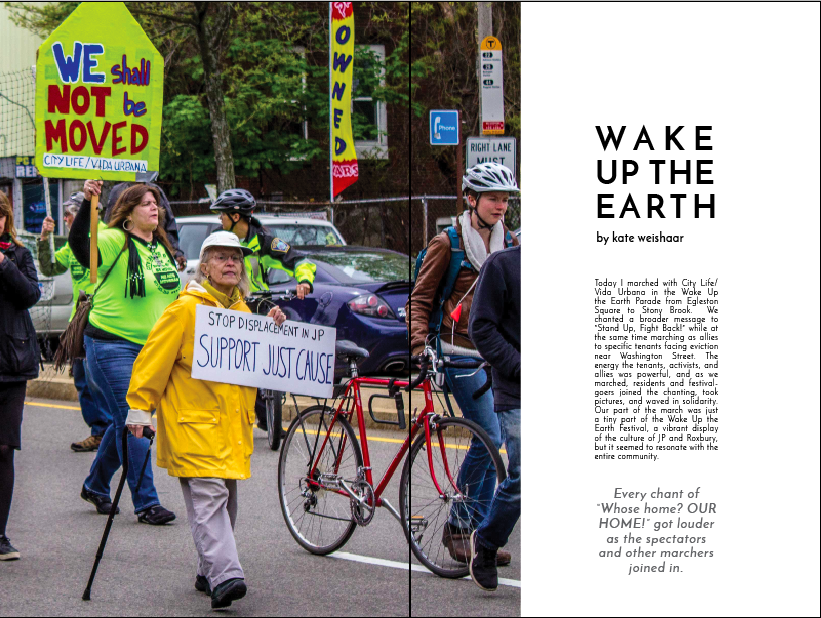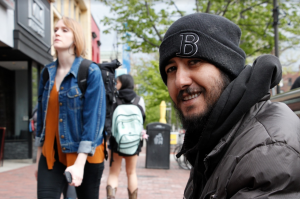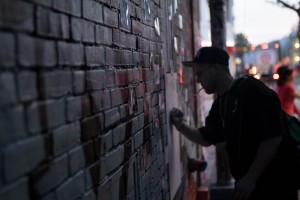
Today I marched with City Life/Vida Urbana in the Wake Up the Earth Parade from Egleston Square to Stony Brook. We chanted a broader message to “Stand Up, Fight Back!” while at the same time marching as allies to specific tenants facing eviction near Washington Street. The energy the tenants, activists, and allies was powerful, and as we marched, residents and festival-goers joined the chanting, took pictures, and waved in solidarity. Our part of the march was just a tiny part of the Wake Up the Earth Festival, a vibrant display of the culture of JP and Roxbury, but it seemed to resonate with the entire community. Every chant of “Whose home? OUR HOME!” got louder as the spectators and other marchers joined in.

As we prepared for the parade, I had the fortune of being able to interview three people. I joined Sam and her Nuvu classmate to talk with City Life/Vida Urbana Community Organizer Alex Ponte-Capellan. Though Alex had already completed a much more detailed interview with Kobbie, he was able to provide a passionate introduction to why we were marching and prepare us to talk to other marchers. Alex broke down the word “gentrification”, talking about how that and other words like “more affluent” were coded language trying to hide the fact that white people are coming into neighborhoods and pushing people of color out.

The second personI interviewed was Luis Cotto, Executive Director of Egleston Square Main Street, an organization that helps keep Egleston Square safe and beautiful for its residents and strengthen the businesses and public spaces. He is careful to help the local economy thrive while also trying tokeep rents affordable for community members, but sometimes improving local businesses can mean that landlords think they can charge more, both for commercial and residential property. As Cotto said, “capitalism is funky that way”. However, he tries to start amicable conversations with develops and policy makers to convince them to keep the community’s best interests at heart. “Community gets defined in so many different ways”, he says, and he wants to make sure local business owners who have been at the heart of that community for many years do not get priced out of the neighborhood.

My third interviewee was Rene Bernal, a tenant facing displacement head on. Despite living in his apartment for a decade, he was asked to leave so that developer City Realty could take over the building. He knew that trying to find a home somewhere else would mean being forced to take his children out of their current schools and hurt their chances at a good future. Rather than giving in to their landlord trying to force them to leave, he and the other tenants formed an association and decided to fight back. With the help of City Life/Vida Urbana, they managed to secure a much smaller rent increase, but the real issue, the length of the contract, remained unsolved. But he made sure to emphasize to me that he and his fellow tenants were by nomeans alone in this struggle. He cited the large number of people at City Life meetings, all facing similar issues. And yet, the city government seemed blind to their needs. He said they were spending more and more on police in the neighborhood while neglecting housing and schools. Rather than accepting this fate, heboldly fights back and calls upon the government to change things. He wants the government to stop talking about fixing the city by some abstract date in the future and instead “fix it now”, because there are people from Roxbury to Chinatown who love their city and want to and deserve to stay.
All audio can be found here: https://soundcloud.com/kate-weishaar/sets/wake-up-the-earth-parade-with-city-life
















